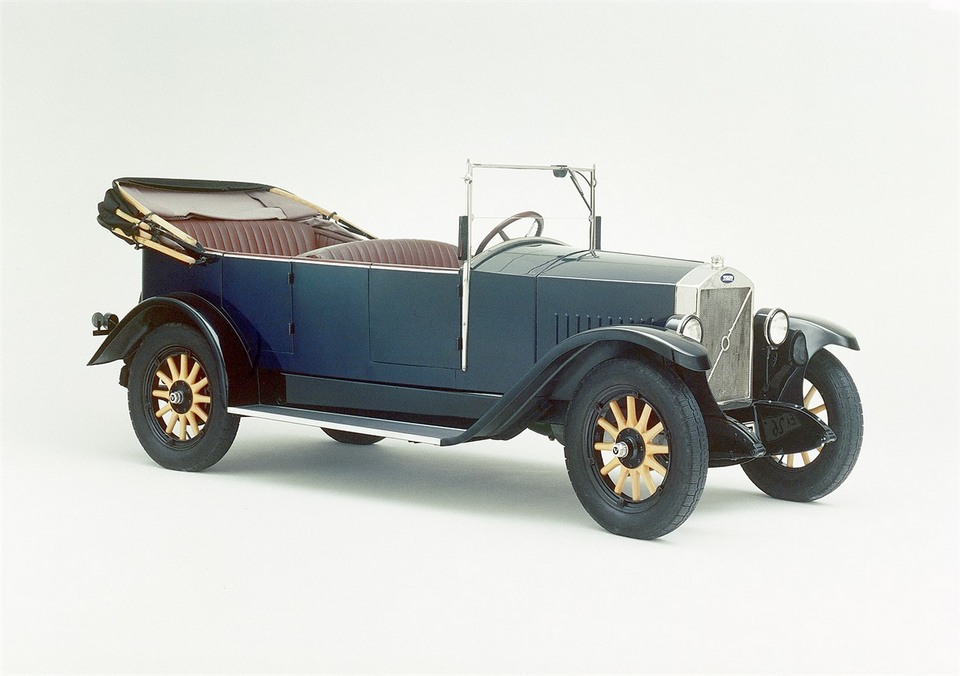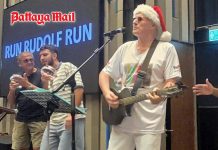
A couple of days ago, while chatting with a friend at a local café, I was introduced to an amiable, elderly Swedish man who greeted me with the question, “Do you play golf?” He looked slightly disappointed by my response, but I began to realise during the ensuing conversation that almost every sentence he uttered contained the word “golf”. He was clearly a golf fanatic and he started telling us about the various places in the world he’d visited to indulge his passion. At this point, my mind began to wander to more interesting matters and I switched to autopilot, hoping that I was nodding and grunting responses at appropriate moments. I decided to make a mental list of Swedish classical composers, but this wasn’t particularly successful because I could think of only one. Dag Wirén, since you asked.
Anyway, can you rattle off a list of Swedish composers? I bet you can’t. For that matter, can you rattle off a list of anything that comes from Sweden? Yesterday I asked a friend the same question yesterday and he couldn’t think of a single item. Then he remembered Volvo cars. Then we remembered IKEA, which you may be surprised to know, was founded back in 1943. Last night, an internet search revealed that I had completely forgotten about Saab cars, Electrolux appliances and Ericsson mobile phones. Absolut vodka also comes from Sweden and has been produced there since 1879.

You have probably seen Swedish Scania trucks lumbering along the expressway and you’ve probably swallowed pills produced by AstraZeneca which, to be completely accurate, is part-Swedish and part-British. If you have pacemaker, you should be grateful to the Swedish physician who invented it in 1958. And we must also thank Sweden for an item without which no home would be complete, the adjustable spanner. Last night, when I was making the dog food, the most obvious one sprang into my mind, the root vegetable known as the swede, or Swedish turnip. In many parts of Britain it’s known simply as a turnip though North Americans evidently refer to it by the more elegant name of “Rutabaga” which oddly enough, sounded like the name of another Swedish composer. But I was getting mixed up with the composer Rautavaara, who was Finnish anyway.
Sweden is evidently the world’s third-largest exporter of pop music and it’s also the origin of the music streaming service known as Spotify which has a library of over 100 million recorded songs. Many of them were recorded by the Swedish singing group ABBA, formed in Stockholm in 1972. Two years later, ABBA won the Eurovision Song Contest, thus putting Sweden on the popular music map. In the classical field, Sweden has produced several singers who have achieved international fame including Jenny Lind, Nicolai Gedda, Jussi Björling, Birgit Nilsson and Elisabeth Söderström.
Johan Helmich Roman was a prolific Swedish baroque composer who earned the soubriquet “the father of Swedish music” but little of his work is heard today. Then there was Franz Berwald who was born in 1796 and achieved fame with his four symphonies. Wilhelm Stenhammar was born in 1871 and was renowned for his contributions to symphonic, choral and chamber music. But perhaps the most frequently performed Swedish composers is Hugo Alfvén. Influenced largely by the romantic movement of the previous century, Alfvén composed five symphonies and much of his work was inspired by the landscapes of Sweden.

Hugo Alfvén (1872-1960): Swedish Rhapsody No. 1 in D major, Op. 19. Orquesta Sinfónica Nacional del Ecuador cond. Yuri Sobolev (Duration: 12.32; Video: 1080p HD)
If you over a certain age, you will almost certainly remember the opening melody of this music. A piece called Swedish Rhapsody was recorded in 1953 by Percy Faith and his Orchestra in America, then later that year by Mantovani and his Orchestra in Britain. Both recordings hit the top of the charts but they were shortened and considerably simplified arrangements of Alfvén’s original score. This was a three-movement suite played without a break, composed by Alfvén in 1903 and originally entitled Midsommarvaka (“Midsummer Vigil”).
At the start, over a gentle “oom-pah” accompaniment by the strings, we hear the famous tune played on the clarinet, but I have to admit that the folksy melody seems ever-so-slightly naff. The relentless jollity of the music reminds me of the sound-track to a Bugs Bunny cartoon. The second movement is a more sombre affair, with long peaceful passages of haunting night-like music. The final movement is an exuberant selection of bucolic polka-like dances and it displays Alfvén’s colourful and competent orchestration.
The printed orchestral score describes the work as a “fantasy on popular Swedish folk melodies, depicting the moods evoked by an old-time Swedish Midsummer wake; the dancing and games around the Maypole through the magic night of Midsummer Eve. One theme is the composer’s own invention while other themes are borrowed from the folk-music of Sweden and elaborated by the composer.” The work proved so popular that the composer later adapted it as a ballet.

Dag Wirén (1905-1986): Serenade for Strings, Op 11. Cali Camerata (Duration: 16:06; Video: 1080p HD)
This is another piece that achieved fame in Britain, because one of its melodies was used as the signature tune to the superb arts television programme Monitor, which ran from 1958 until 1965. Dag Wirén was one of the most important Swedish composers in the twentieth century. He once commented that his first desire was to entertain and please, and compose listener-friendly “modern” music.

He was influenced by Nielsen and Sibelius and his music often has a neo-classical quality, evoking the forms and styles of the eighteenth century though with modern harmonies. He wrote five symphonies and four concertos, theatre and film music, a couple of operettas written for radio and a ballet written for television. This was entitled Den elaka drottningen (“The Evil Queen”) and it won the 1960 Prix Italia. He also wrote the music for the Swedish entry for the 1965 Eurovision Song Contest, Annorstädes vals (“Absent Friend”). But despite its illustrious composer, the song didn’t do particularly well, and was placed seventh in the competition.
I remember first hearing Dag Wiren’s Serenade when I was a teenager and being rather taken with his idiomatic musical style. The work is in four movements and the opening Preludium features an expansive melody played over a scampering accompaniment. The Andante espressivo opens with an insistent rhythm from pizzicato (plucked) strings and a curious hymn-like melody from the violins which later appears on the violas. The music moves through different tonalities and eventually the entire ensemble is playing pizzicato as the music fades away almost to nothing. The lively Scherzo is brilliantly scored with contrasts between pizzicato and bowed strings. The music is lightly scored giving a pleasing feeling of transparency until the mood changes and the sense of urgency pervades in the middle section.
The finale, described as Marcia seems to echo the opening bars of Alfvén’s Swedish Rhapsody, with a pizzicato accompaniment from the strings. The Monitor theme (10:44) is played on the 2nd violins with more pizzicato accompaniment. Dag Wirén clearly adored the sound of pizzicato accompaniments. The main theme is developed vigorously and there’s a middle section in a contrasting style, a bit like Parisian café music, before the main theme returns. Interestingly, although there is a lot of musical excitement and activity, all four of the movements end quietly.
Oh yes, returning to the subject of Sweden, I discovered that two thirds of the country is covered by forests and it has over 90,000 lakes. It also has over 24,000 islands whereas in contrast, the United Kingdom has a mere 6,000. There are more moose in Sweden per square kilometer than any other country in the world, with a moose population of between 300,000 and 400,000. I suppose it can only be an estimation, because presumably no one has ever got around to counting them. And in case you’re wondering, Sweden has over five hundred golf courses.











